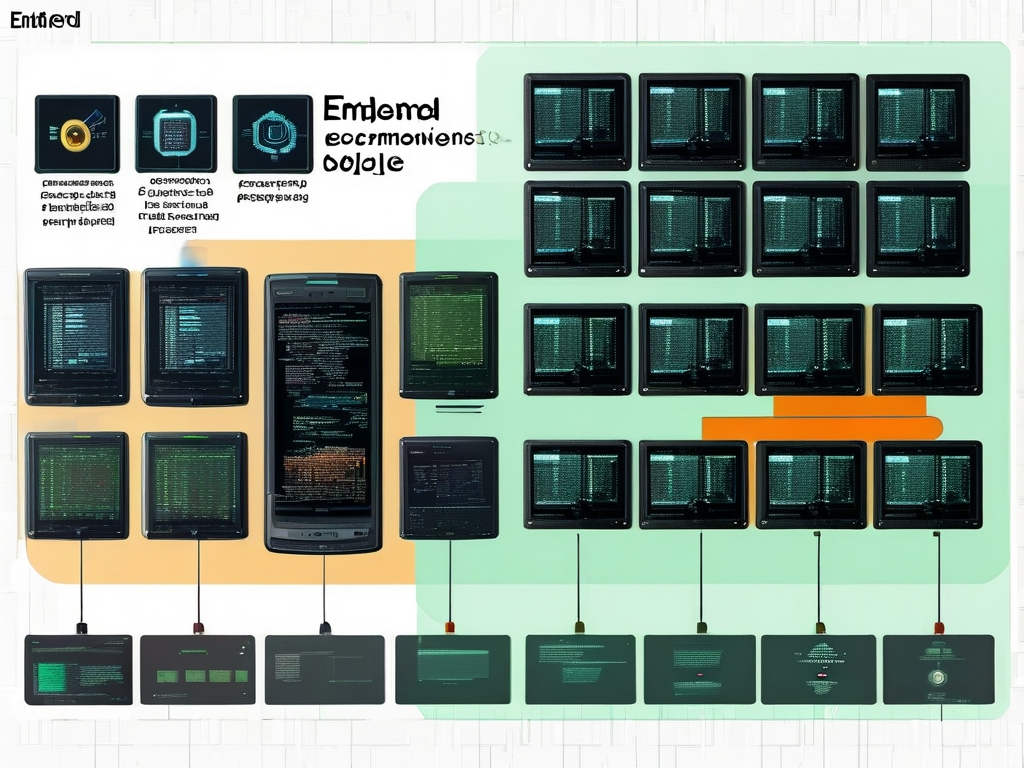In the realm of technology, embedded systems and embedded development are frequently discussed concepts, yet their distinctions and interconnections often remain unclear. This article explores the fundamental differences, applications, and practical considerations between these two domains, offering insights for engineers and enthusiasts navigating this field.

Defining the Basics
An embedded system refers to a specialized computing platform designed to perform dedicated functions within larger mechanical or electrical systems. These systems integrate hardware and software components optimized for real-time operations, low power consumption, and compact form factors. Common examples include microcontrollers in smart home devices, automotive control units, and industrial automation equipment.
Embedded development, on the other hand, encompasses the process of creating software and hardware solutions for these systems. It involves designing architectures, writing firmware, debugging code, and integrating peripherals. This discipline requires expertise in programming languages like C/C++, hardware schematics, and real-time operating systems (RTOS).
Key Differences
-
Scope and Purpose
Embedded systems represent the end product – a functional unit embedded within a device. Embedded development is the methodology to build that product. For instance, a fitness tracker’s heart rate monitoring module is an embedded system, while the coding and testing of its sensor algorithms fall under embedded development. -
Skill Requirements
Developing embedded systems demands cross-disciplinary knowledge. Engineers must understand circuit design, power management, and sensor integration. In contrast, embedded development often focuses more on software optimization, driver development, and system debugging. A developer might spend days refining interrupt service routines (ISRs) to minimize latency in a robotics controller. -
Tools and Workflows
Typical embedded development workflows involve toolchains like GCC for ARM architectures, JTAG debuggers, and oscilloscopes for signal analysis. Embedded system designers frequently use simulation tools such as Proteus or MATLAB/Simulink to model hardware-software interactions before prototyping.
Industry Applications
The convergence of embedded systems and development practices drives innovation across sectors:
- Consumer Electronics: Smartwatches leverage embedded systems for biometric tracking, while developers create energy-efficient firmware to extend battery life.
- Automotive: Modern vehicles contain over 100 embedded systems for functions like anti-lock braking. Development teams use AUTOSAR standards to ensure interoperability between ECUs.
- Healthcare: Medical devices like insulin pumps rely on fail-safe embedded systems, requiring developers to implement rigorous safety checks under standards like IEC 62304.
Challenges and Solutions
Memory constraints remain a critical challenge in embedded systems. Developers often employ techniques like static memory allocation or custom memory pools to avoid heap fragmentation. For example, in IoT edge devices, engineers might use FreeRTOS with carefully tuned task priorities to manage limited RAM.
Another hurdle is hardware-software co-design. A robotics project might involve selecting a SoC (System-on-Chip) that balances GPIO pins with computational power. Developers frequently prototype with Raspberry Pi Pico before migrating to custom PCB designs.
Future Trends
The rise of AIoT (Artificial Intelligence of Things) is blurring traditional boundaries. TinyML frameworks now enable machine learning models to run on microcontrollers, demanding new embedded development strategies. Consider a smart agricultural sensor that uses TensorFlow Lite for Microcontrollers to analyze soil data locally – this requires both system optimization and ML expertise.
Edge computing further emphasizes the need for secure embedded systems. Developers are adopting techniques like trusted execution environments (TEEs) and secure bootloaders to protect devices from firmware attacks.
Understanding the synergy between embedded systems and embedded development is crucial for technological advancement. While embedded systems provide the physical implementation of intelligent devices, embedded development serves as the engineering backbone that brings these systems to life. As technologies evolve, professionals must continuously adapt their skills in both domains to create robust, efficient, and innovative solutions.





